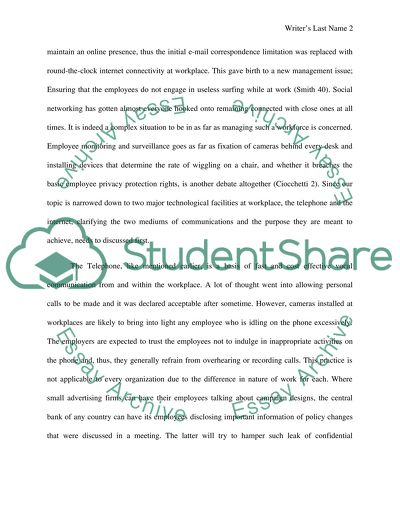Cite this document
(“Employee Rights to Privacy at the Workplace Essay”, n.d.)
Employee Rights to Privacy at the Workplace Essay. Retrieved from https://studentshare.org/law/1494853-workplace-privacy
Employee Rights to Privacy at the Workplace Essay. Retrieved from https://studentshare.org/law/1494853-workplace-privacy
(Employee Rights to Privacy at the Workplace Essay)
Employee Rights to Privacy at the Workplace Essay. https://studentshare.org/law/1494853-workplace-privacy.
Employee Rights to Privacy at the Workplace Essay. https://studentshare.org/law/1494853-workplace-privacy.
“Employee Rights to Privacy at the Workplace Essay”, n.d. https://studentshare.org/law/1494853-workplace-privacy.


